
Power salads have increasingly become a staple in the diets of health-conscious individuals, offering a convenient and delicious way to consume a variety of nutrient-dense foods. These salads are not your typical garden variety; they are meticulously crafted to include an array of vegetables, proteins, and superfoods, making them a powerhouse of nutrition. The concept behind power salads is to provide a balanced meal that fuels the body with essential vitamins, minerals, and antioxidants, thereby enhancing overall wellness.
One of the primary reasons for the rising popularity of power salads is their ability to improve energy levels. By integrating a wide spectrum of nutrient-rich ingredients, these salads supply the body with sustained energy, avoiding the spikes and crashes often associated with high-sugar or processed foods. Ingredients such as leafy greens, nuts, seeds, lean proteins, and a variety of colorful vegetables collectively provide a steady release of energy, keeping you active and focused throughout the day.
Improved digestion is another significant benefit of incorporating power salads into your diet. The inclusion of various fibers from vegetables and legumes aids digestive health by promoting regular bowel movements and fostering a healthy gut microbiome. Additionally, the natural enzymes present in raw vegetables contribute to better nutrient absorption and ease of digestion.
Beyond energy and digestion, power salads offer a holistic approach to wellness. They are rich in antioxidants, which help combat oxidative stress and reduce inflammation, contributing to improved immune function and a lower risk of chronic diseases. The diverse ingredients ensure that the body receives a broad spectrum of nutrients, supporting everything from skin health to mental clarity.
In essence, power salads are more than just a meal; they are a strategic approach to nutrition that aligns with the goal of achieving optimal health and vitality. By incorporating such nutrient-packed delights into your daily diet, you can enjoy a flavorful and satisfying way to enhance your well-being.
Bee pollen is often celebrated for its extraordinary nutritional profile, making it a powerful addition to any health-conscious diet. This granular substance, collected by bees from the flowers they visit, is packed with an impressive array of vitamins, minerals, proteins, and antioxidants. The rich nutrient content of bee pollen includes a spectrum of B vitamins such as B1, B2, B6, and B12, which are essential for energy production and metabolic function. Additionally, it contains significant amounts of vitamin C, vitamin E, and vitamin D, contributing to overall wellness and immune support.
Mineral-wise, bee pollen is rich in calcium, magnesium, and potassium, which are crucial for maintaining bone health, muscle function, and cardiovascular stability. Furthermore, it is a potent source of proteins, including all the essential amino acids that the human body cannot synthesize on its own. This makes bee pollen a complete protein source, beneficial for muscle repair, growth, and overall tissue health.
The antioxidants present in bee pollen, such as flavonoids and carotenoids, play a crucial role in neutralizing harmful free radicals in the body, thereby reducing oxidative stress and lowering the risk of chronic diseases. These antioxidants also exhibit anti-inflammatory properties, which can help alleviate conditions such as arthritis and other inflammation-related ailments.
Beyond its nutritional value, bee pollen is known to boost immunity and enhance energy levels. Its immune-enhancing properties are attributed to its ability to stimulate the production of white blood cells, fortifying the body’s defense mechanisms. The natural sugars and proteins within bee pollen provide a sustained release of energy, making it an excellent option for athletes and individuals with active lifestyles.
However, it is important to consider potential allergies associated with bee pollen consumption. Some individuals may experience allergic reactions, particularly those with pollen allergies or sensitivities to bee stings. It is advisable to start with small amounts and consult a healthcare professional if you have any concerns. Bee pollen is a powerful, nutrient-dense food, but as with any supplement, it should be consumed mindfully.
The citrus vinaigrette is a cornerstone of the Power Salad, infusing it with a vibrant burst of flavor that enhances the complexity of the dish. This dressing is a harmonious blend of natural ingredients, each contributing to an intricate balance of taste and health benefits. Key components include freshly squeezed lemon, orange, and lime juices, which provide a refreshing acidity that cuts through the richness of other salad ingredients. These citrus elements are not only flavor enhancers but are also packed with vitamins, particularly vitamin C, which is known for its immune-boosting properties.
Olive oil serves as the base of the vinaigrette, adding a smooth, slightly fruity undertone. Rich in monounsaturated fats and antioxidants, olive oil is renowned for its heart-healthy benefits. It helps to emulsify the dressing, ensuring a silky texture that coats each salad leaf uniformly. Honey is another essential ingredient, balancing the tartness of the citrus with its natural sweetness. Besides adding a delightful flavor, honey offers antibacterial and anti-inflammatory properties, making the dressing not just tasty but also nutritionally advantageous.
The interplay of these ingredients creates a complex yet harmonious dressing that elevates the Power Salad. The citrus juices contribute a zesty brightness, while the olive oil adds depth and a subtle richness. Honey rounds out the flavor profile, ensuring that each bite of the salad is a well-rounded experience. This vinaigrette doesn’t just enhance the taste of the salad; it also boosts its nutritional profile, making it a perfect complement to the nutrient-dense components of the Power Salad. The result is a dressing that is as healthful as it is delicious, making it a vital part of this nutrient-packed delight.
The foundation of a power salad lies in its carefully selected ingredients, which are not only flavorful but also packed with essential nutrients. A well-balanced power salad typically includes a variety of leafy greens, colorful vegetables, proteins, and superfoods, each contributing to its nutritional prowess.
Leafy Greens: Spinach, kale, and arugula form the base of the power salad. Spinach is rich in iron, calcium, and vitamins A and C, making it excellent for boosting immunity and bone health. Kale, known for its high fiber content, aids in digestion and provides a substantial dose of antioxidants. Arugula, with its peppery flavor, is a great source of vitamin K and folate, essential for heart and bone health.
Colorful Vegetables: Adding a spectrum of colors not only makes the salad visually appealing but also ensures a broad range of nutrients. Bell peppers, available in various hues, are loaded with vitamin C and antioxidants that help combat free radicals. Carrots bring beta-carotene to the mix, which is vital for eye health. Tomatoes, rich in lycopene, offer protection against certain cancers and promote skin health.
Proteins: Proteins are crucial for muscle repair and overall growth. Chicken, a lean source of protein, adds satiety without excess fat. Tofu, a plant-based protein, is excellent for those following a vegetarian or vegan diet and provides all essential amino acids. Chickpeas, also known as garbanzo beans, are not only rich in protein but also in fiber, aiding in digestive health and keeping you full longer.
Superfoods: Avocado, nuts, and seeds elevate the nutritional profile of the power salad. Avocado is packed with healthy fats, particularly monounsaturated fats, which are beneficial for heart health. Nuts such as almonds and walnuts offer a good source of protein and omega-3 fatty acids, essential for brain function. Seeds like chia and flaxseeds are high in fiber and omega-3s, contributing to cardiovascular health and reducing inflammation.
By integrating these diverse and nutrient-rich ingredients, the power salad not only becomes a delightful meal but also a powerhouse of health benefits, ensuring a balanced intake of vitamins, minerals, and macronutrients.
Creating a Power Salad with Bee Pollen Citrus Vinaigrette is an enjoyable and straightforward process. This section provides a detailed, step-by-step guide to ensure you achieve optimal taste and nutrition.
Start by thoroughly washing all the vegetables under cold running water. It’s essential to remove any dirt or pesticide residue, ensuring the salad is as fresh and clean as possible. After washing, use a clean kitchen towel or salad spinner to dry the vegetables. This step is crucial as excess moisture can dilute the flavors of your salad.
Next, chop your vegetables according to your preference. For a balanced texture, consider dicing cucumbers and tomatoes into small cubes, slicing bell peppers into thin strips, and julienning carrots. Leafy greens like spinach and kale should be torn into bite-sized pieces. Ensure uniform sizes to promote even mixing and presentation.
Proteins are a vital component of the Power Salad. Depending on your choice, proteins like grilled chicken, tofu, or chickpeas can be used. If using chicken, season it with salt, pepper, and a dash of lemon juice, then grill or pan-sear until fully cooked. For tofu, press it to remove excess water, then marinate and bake or sauté until golden brown. Chickpeas can be roasted with olive oil and spices for added crunch.
Once the vegetables and proteins are ready, it’s time to assemble the salad. In a large bowl, combine the leafy greens, chopped vegetables, and cooked proteins. Toss gently to mix the ingredients evenly. Adding nuts, seeds, or dried fruits at this stage can enhance the salad’s texture and nutritional value.
For the vinaigrette, combine freshly squeezed citrus juice (such as lemon or orange), olive oil, honey, Dijon mustard, and a pinch of sea salt in a jar. Add bee pollen for its unique flavor and nutritional benefits. Seal the jar and shake vigorously until the ingredients are well mixed and emulsified. Taste and adjust seasoning if necessary.
To ensure optimal flavor, pour the vinaigrette over the salad just before serving. Mix gently to coat all ingredients evenly. If you have leftover vinaigrette, store it in an airtight container in the refrigerator. Shake well before each use, as separation may occur.
By following these steps, you can create a delicious and nutrient-packed Power Salad with Bee Pollen Citrus Vinaigrette that is sure to impress and nourish.
Creating the perfect power salad is a highly personal endeavor, allowing you to tailor it to your specific tastes and dietary needs. The beauty of this dish lies in its flexibility, offering a myriad of possibilities for customization. Whether you’re adhering to a vegan, gluten-free, or keto-friendly diet, or simply looking to explore new flavors, there are countless ways to make this nutrient-packed delight uniquely yours.
To begin, consider the greens that form the foundation of your salad. While the original recipe may call for kale or spinach, feel free to experiment with other leafy greens like arugula, romaine, or mixed baby greens. Each type of green offers its own distinct texture and nutritional benefits, ensuring that you never tire of your salad base.
Protein is another crucial component of a power salad, providing the necessary sustenance to keep you energized throughout the day. Traditional options include grilled chicken, tofu, or hard-boiled eggs. However, you can also explore plant-based proteins such as chickpeas, lentils, or edamame for a vegan twist. For those following a keto diet, consider adding high-fat, low-carb options like avocado or nuts.
Adding a variety of fruits and grains can elevate your salad to new heights. Fresh berries, apple slices, or citrus segments can introduce a delightful sweetness, while quinoa, farro, or brown rice offer a hearty, fiber-rich addition. To keep your salad gluten-free, choose naturally gluten-free grains like quinoa or wild rice, and always check labels for potential cross-contamination.
Cheese lovers can enhance their salad with a sprinkle of feta, goat cheese, or Parmesan. If you’re vegan, opt for dairy-free alternatives made from nuts or soy. Additionally, incorporating a mix of seeds, nuts, or dried fruits can add both texture and flavor complexity to your dish.
Ultimately, the key to a successful power salad lies in its versatility. By experimenting with different ingredients and honoring your dietary preferences, you can craft a delicious and nourishing meal tailored specifically to your needs.
Creating a balanced and nutritious meal involves thoughtful pairings that complement each other both in flavor and nutritional value. The Power Salad with Bee Pollen Citrus Vinaigrette shines as a nutrient-dense dish, but to elevate the dining experience, consider adding a few well-chosen accompaniments.
A light soup can serve as an excellent starter. Options like a vegetable-based minestrone or a delicate miso soup not only provide additional vitamins and minerals but also prepare the palate for the robustness of the salad. These soups are generally low in calories yet high in nutrients, making them perfect companions.
Whole grain breads, such as a slice of warm, crusty whole wheat or multigrain loaf, can add a satisfying texture contrast to the crispness of the salad. Whole grains are rich in fiber, which complements the high protein and vitamin content of the Power Salad, creating a more balanced and satiating meal.
For beverages, consider nutrient-packed smoothies or herbal teas. A green smoothie, perhaps with ingredients like spinach, banana, and almond milk, can add an extra dose of antioxidants and natural sweetness to the meal. Alternatively, a berry smoothie can offer a refreshing and tangy counterpoint. Herbal teas, such as chamomile or mint, are soothing choices that aid digestion and provide a calming finish to the meal.
Lastly, incorporating a protein-rich side dish like quinoa salad or a small serving of grilled chicken can ensure that the meal meets all dietary requirements. These additions provide essential amino acids and complete the nutritional profile of the Power Salad, ensuring a well-rounded and satisfying dining experience.
By thoughtfully pairing the Power Salad with these complementary dishes and beverages, you can create a meal that is not only balanced and nutritious but also immensely enjoyable.
The Power Salad with Bee Pollen Citrus Vinaigrette is a delightful and nutrient-packed meal that combines fresh, vibrant ingredients with a unique, flavorful dressing. Throughout this blog post, we have explored the various components of this salad, from the crisp greens and colorful vegetables to the protein-packed nuts and seeds. Each element plays a crucial role in delivering a well-rounded, nutritious dish that is both satisfying and health-promoting.
One of the standout features of this salad is the bee pollen citrus vinaigrette. Bee pollen, a natural superfood, is rich in vitamins, minerals, proteins, and antioxidants, which contribute significantly to overall health. When combined with the zesty citrus notes of the vinaigrette, it elevates the salad both in taste and nutritional value. This dressing not only enhances the flavors but also provides additional health benefits, such as improved digestion, reduced inflammation, and strengthened immune function.
We encourage you to try making this power salad at home. Feel free to experiment with different ingredients to tailor it to your taste preferences and dietary needs. Incorporating a variety of vegetables, fruits, nuts, and seeds can ensure a diverse intake of essential nutrients. Moreover, preparing meals like this at home allows for greater control over the quality and freshness of the ingredients used.
Regularly including nutrient-rich meals such as the Power Salad with Bee Pollen Citrus Vinaigrette into your diet can have lasting health impacts. These meals support overall wellness by providing essential vitamins, minerals, and antioxidants, which can help in maintaining a healthy weight, boosting energy levels, and preventing chronic diseases. By making small, consistent changes to your diet, you can pave the way for a healthier, more vibrant lifestyle.
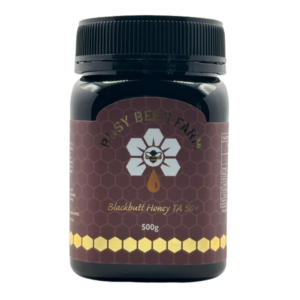
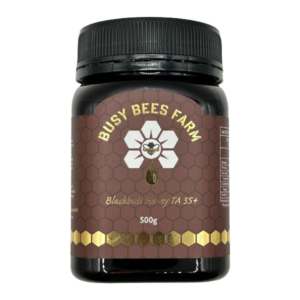



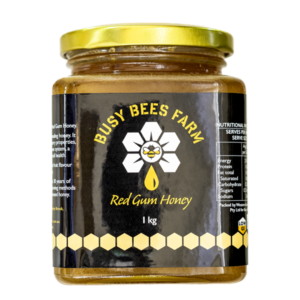

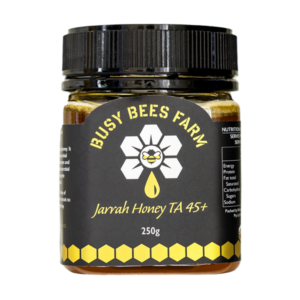

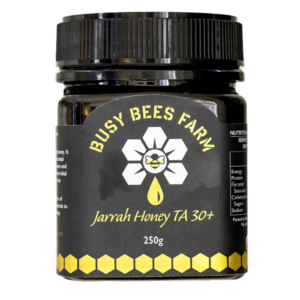
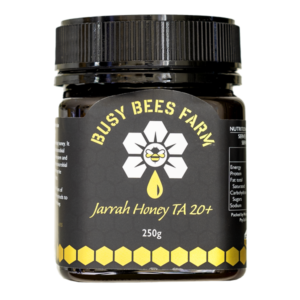

Copyright© 2024 Busy Bees Farm / Australia